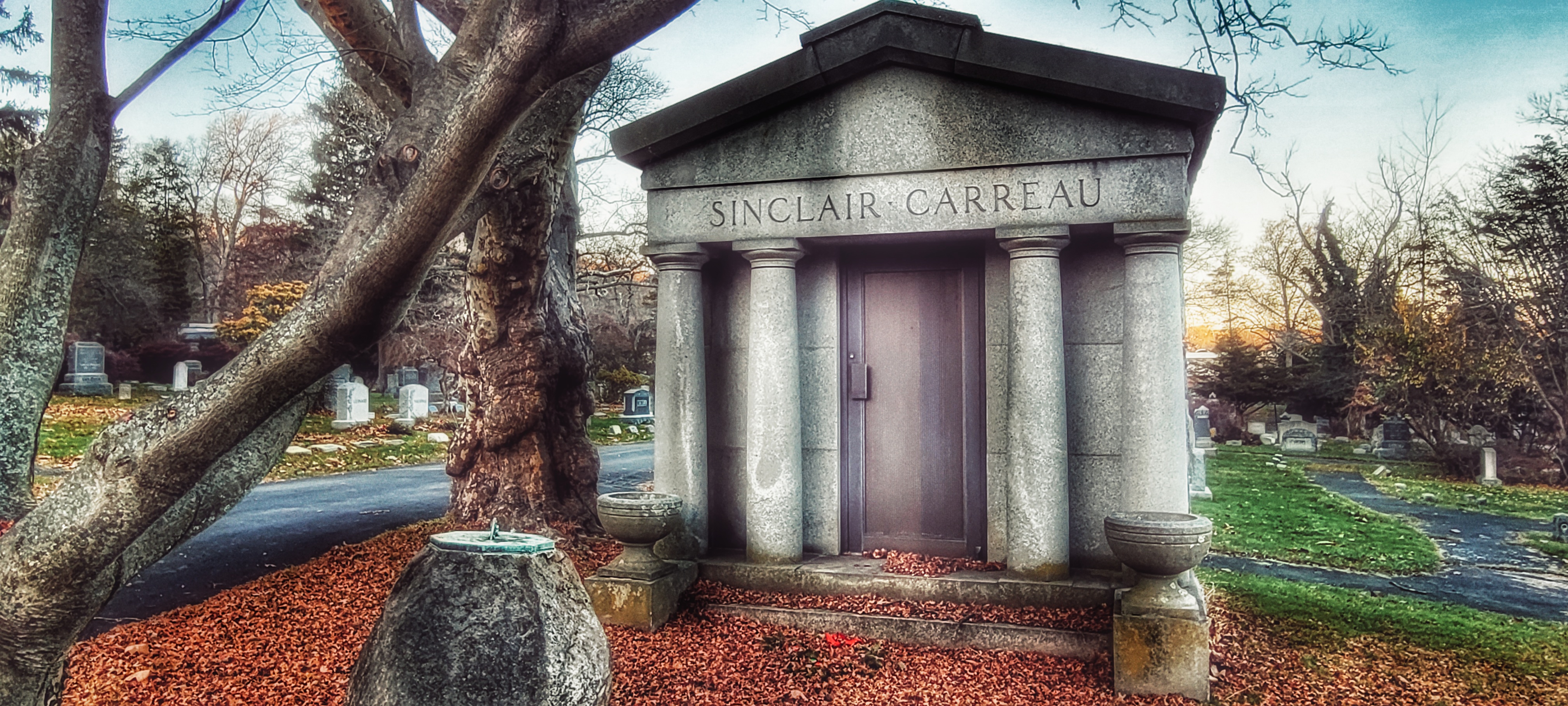Architecture of the Rockefeller Mausoleum: Design and Legacy

Standing as a prominent symbol of wealth and remembrance, the Rockefeller mausoleum crowns the cemetery's highest point. William Rockefeller (1841-1922) co-founded Standard Oil (now Exxon) with his brother John. He commissioned this mausoleum for his wife, Almira, after her death in 1920. The couple lived nearby in Rockwood Hall, a 204-room mansion on Albany Post Road. Welles Bosworth, a distinguished architect trained at the Ecole de Beaux Arts, designed the mausoleum. Bosworth also led the architecture for the Pan-American Exposition in Buffalo in 1901. The mausoleum features a classical revival style. Bronze doors and engaged Ionic columns (columns attached to walls with spiral capitals) highlight this design. It also has a pyramid-shaped roof and large monolithic wall stones (single, massive stone blocks). On the lower step of the stylobate—the platform base of the structure—appears the Rockefeller name, signifying the family's legacy. Together, these elements giv...








.jpeg)

.jpeg)

